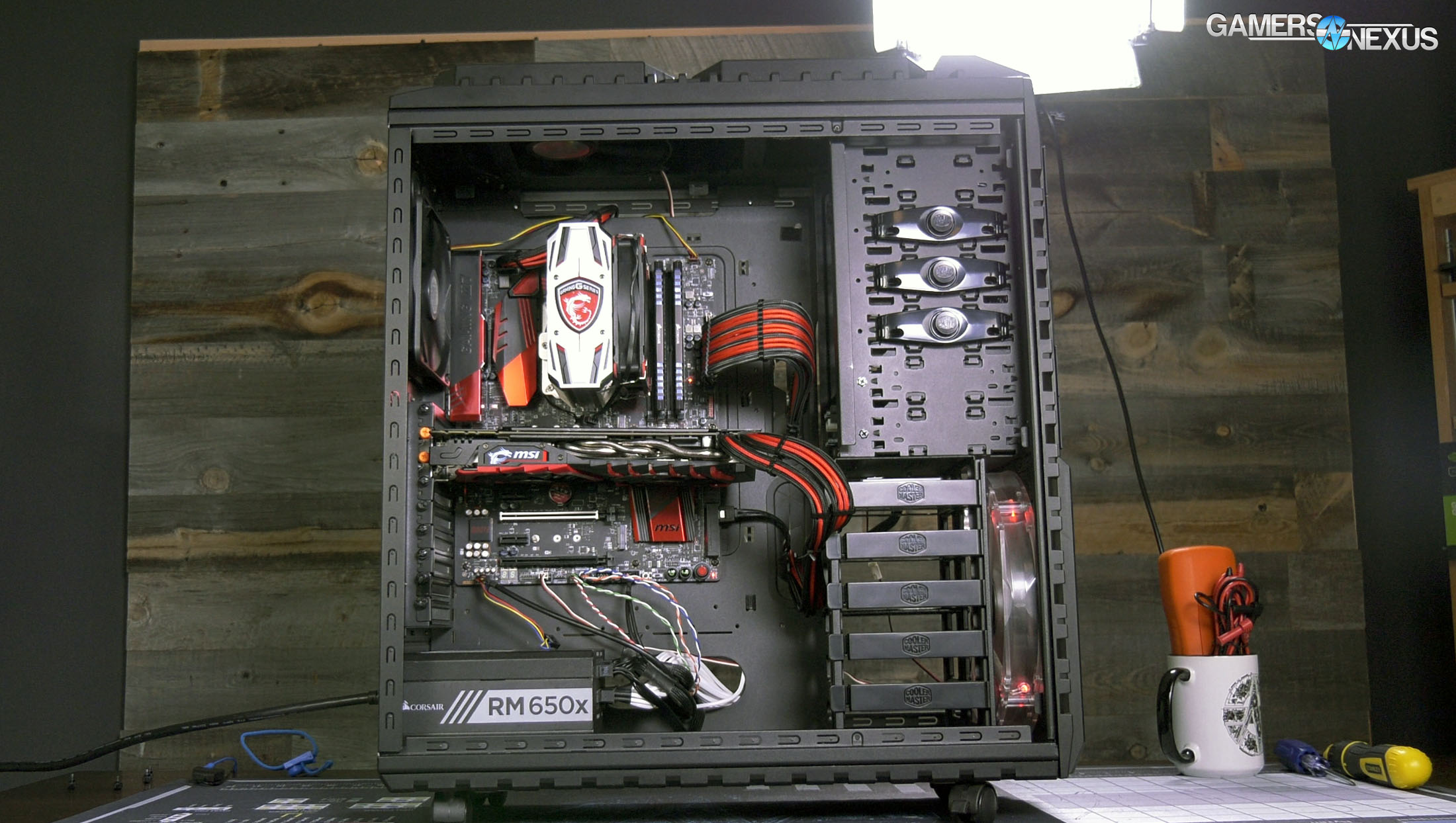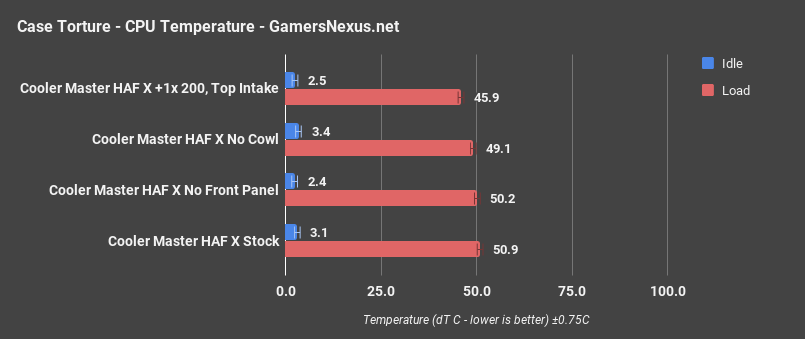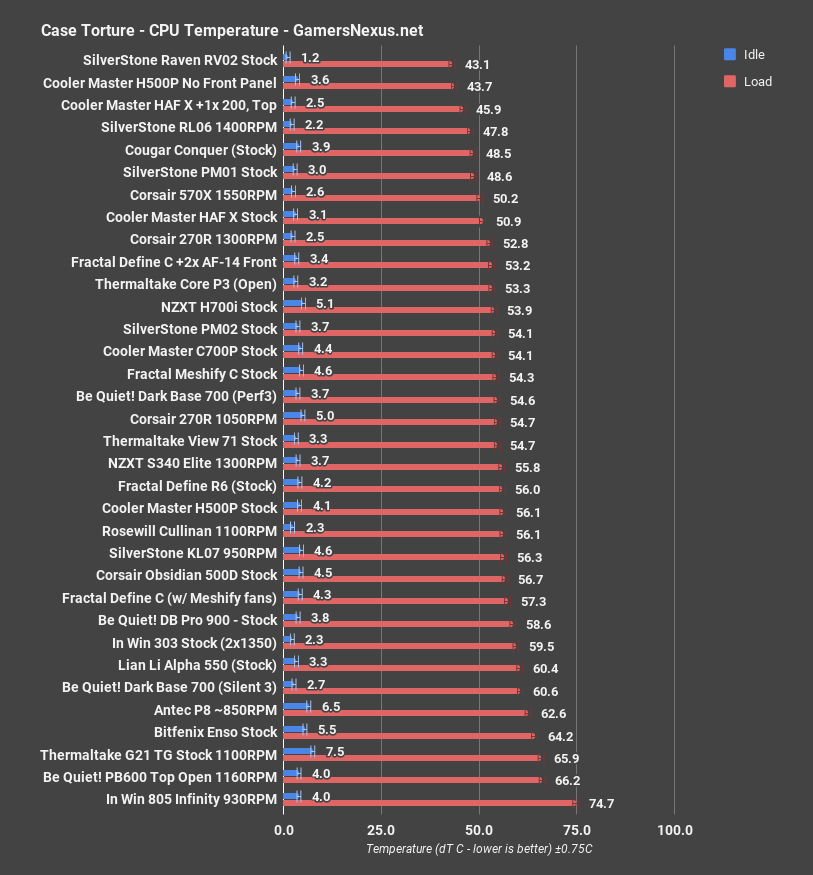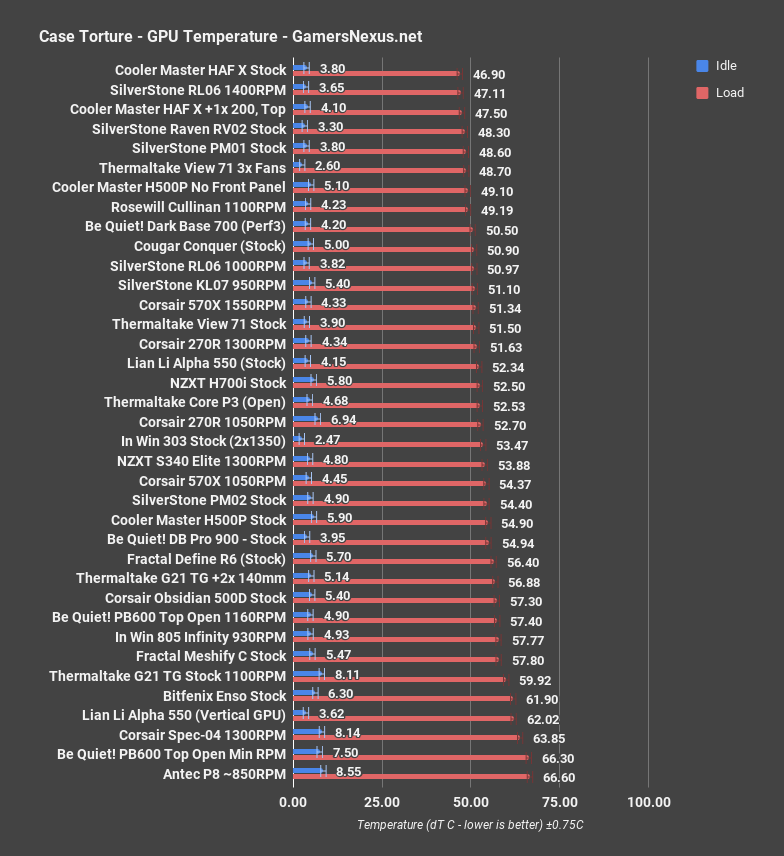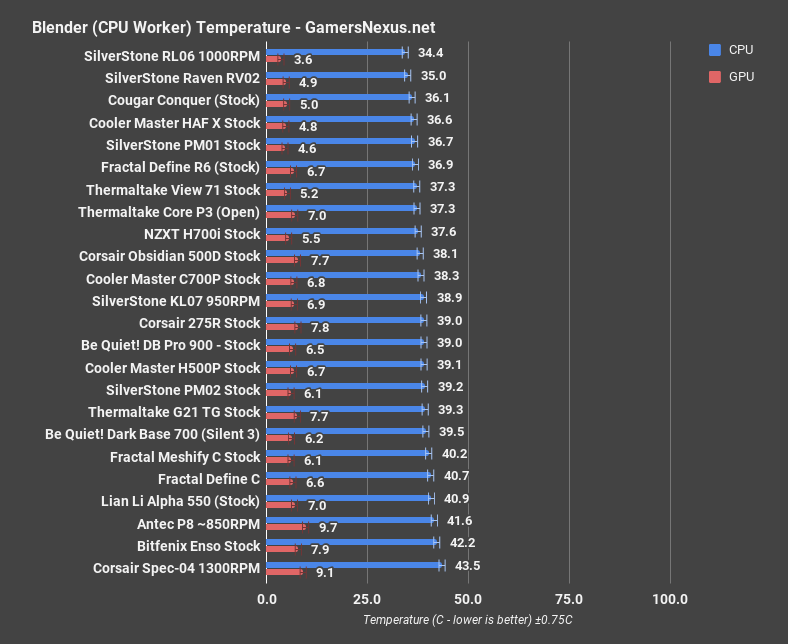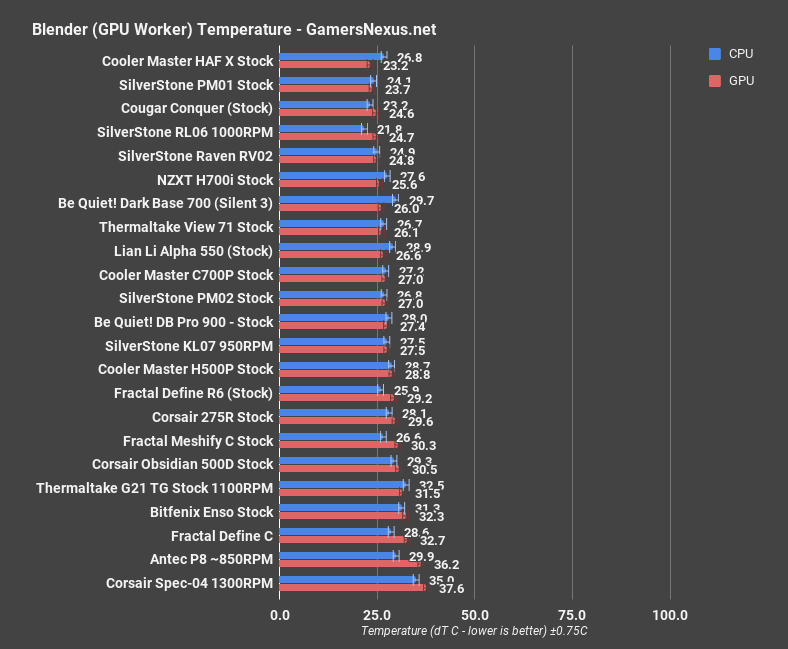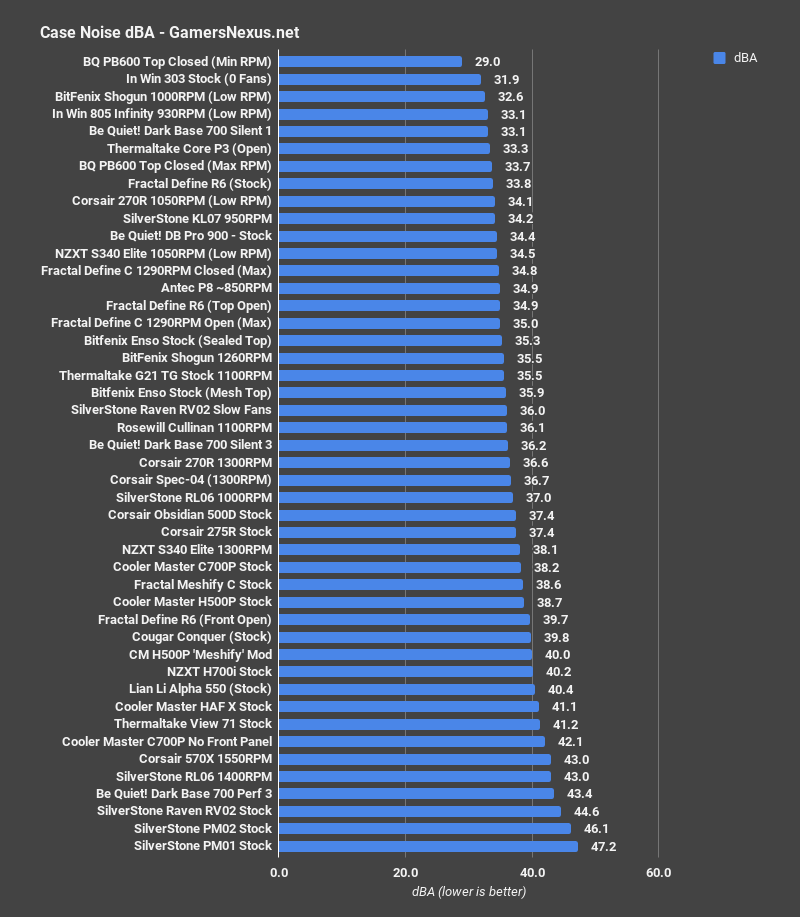We recently revisited the “King of Case Airflow”, the SilverStone Raven 02, which we originally reviewed back in 2013. It’s certainly the king compared to anything we’ve tested recently, but competition for the crown was a lot stronger back when the case was released, and the ultimate example of high airflow early 2010’s cases is the Cooler Master HAF X (still available, by the way). 2010 seems like ancient history, back when certain people were working for Newegg TV and others for NCIX, but the HAF series remains so respected that Cooler Master leveraged the name to promote the H500P last year; the HAF X specifically was so popular that brand new ones are available for purchase on Newegg right now, nearly eight years after its release.
GamersNexus did exist when the HAF X launched, but we never officially reviewed it. Steve bought the case featured in this revisit for his own system years ago, and we ran a contest for a HAF X shirt in 2012. It seems like everyone had a high opinion of it, including us, which made the H500P a big letdown. This revisit aims to find out whether the HAF X was really worthy of all that hype.
Cooler Master HAF X Specs
Materials | Steel, mesh, polymer |
Dimension | 230 x 599 x 550 mm / 9.1 x 23.6 x 21.7 inch (W x H x D) |
Weight | 14.35 kg / 31.6 lbs |
M/B Type | microATX, ATX, E-ATX, GIGABYTE XL-ATX |
5.25" Drive Bays | 6 (2 from X-Dock) |
3.5" Drive Bays | 5 (hidden) (supports 2-in-1 2.5" and 1.8" SSD) |
2.5" Drive Bays | 2 (from 5.25" drive bays) |
I/O Panel | USB 3.0 x 2 (internal),USB 2.0 x 2, IEEE 1394a x 1, e-SATA x 1, Audio x 1, Mic x 1 |
Expansion Slots | 9 |
Cooling System | Front: 230x30 mm red LED fan x 1 Top: 200x30mm fan x 2 (one is optional) Side: 200x30mm fan x 1 Rear: 140x25mm fan x 1 VGA card fan duct: 120x25 mm or 120x38mm fan x 1 (optional) VGA card holder:8 0x15mm fan x 1 (optional) |
Power Supply Type | Standard ATX PS2 |
Maximum Compatibility | VGA card length: 342mm / 13.5 inch CPU cooler height: 190mm / 7.5 inch |
The first step for this revisit was thoroughly cleaning Steve’s old case. The HAF X, like many 2010-era enclosures, was practically designed to catch dust. There’s mesh everywhere; even the 5.25” bay covers are made of mesh. That’s obviously good for cooling, but the filters on the HAF X are part of the outer shell of the case, which makes them much more difficult to clean than the magnetic filters most manufacturers use now. The manual suggests simply removing them and brushing them off, but really cleaning them out required bending metal tabs flat, disassembling the panels to extract the inner mesh layer, and then washing them. Even on the non-mesh surfaces, there are tons of dust-collecting bumps and flanges for the “tactical” look that was fashionable at the time. Steve kept this HAF X fairly clean, but wiping off the light coating of dust it had gathered in storage took ages, and there are probably going to be quite a few commenters letting us know that we missed a spot. With the full complement of VGA supports, air ducts and other accessories that come with the case, cleaning would be even harder.
And there were a ton of accessories (a.k.a. “plastic crap”) compared to modern cases. A duct around the side panel fan, a VGA support to prevent sag (with a built-in fan mount), a duct behind the drive cages to direct air towards the GPU (with another fan mount), an internal SATA dock, pass-through USB 3.0 and SATA cables, a sliding plastic door for the front I/O, button-controlled LEDs on the front fan. One thing that case manufacturers and consumers have both learned over the years is that more is not necessarily better, and the biggest case with the most junk crammed into it isn’t the best. Steve removed the drive cage duct, the VGA support, and the PSU shroud years ago (good riddance). Of the various bells and whistles, the removable partial PSU shroud ranks last in usefulness--it just hides a little cable clutter, and there was none with our modular PSU. The removable casters on the bottom might rank first, both because they make the bulky case easier to move and lift the bottom vents away from the dusty floor a little more.
The side panels make it hard to excuse modern cases that still use flimsy tabs to slide into place. The HAF X uses two heavy steel panels that hinge out simply and easily along the front edge, but are sturdy enough to press cables into place. Cable tie points aren’t tidily placed in pairs like cases we’ve reviewed lately, but they exist, which is good enough in an enclosure this big: there’s plenty of room to spread out cables and tie them down, especially with the bulky stock USB and SATA cables cleared out. The side panel window is pathetic compared to the huge sheets of tempered glass that are now commonplace: not much is visible because of the space taken up by the side fan, and the dim red LEDs from the front fan leave the interior dark.
Front I/O includes two USB 3.0 ports (pretty good for 2010), as well as firewire, eSATA, and two standard USB. Unfortunately, the USB 3.0 ports don’t connect to an internal header, they’re just extension cables that can be routed through the case and plugged into the back (although it seems like new HAF Xs come with true internal connectors). There’s also a button that controls the LEDs on the front fan, but no built-in fan controller. The plastic door over the panel is a bit excessive considering that it has to be opened to turn on the computer, but it could help keep dust out of the upwards-facing ports. The USB ports on Steve’s case haven’t survived the years, but the other ports and buttons remain functional.
Case Testing Methodology
We tested using our new Skylake case test bench, detailed in the table below. This particular configuration is brand new with the launch of the 570X & 270R. Results on this test platform cannot be compared to previous case benchmark results, as the platform has completely changed.
Conducting thermal tests requires careful measurement of temperatures in the surrounding environment. We control for ambient by constantly measuring temperatures with thermocouples and laser readers. We then produce charts using a Delta T(emperature) over Ambient value. This value subtracts the thermo-logged ambient value from the measured diode temperatures, producing a delta report of thermals. AIDA64 is used for logging thermals of silicon components, including the GPU diode.
All case fans are manually configured to their maximum throughput using BIOS, then we configure to an RPM closer to 1050 for a universal "quiet" testing. If a fan controller is present, we opt-in and test on multiple settings. This forces testing of case fan performance in addition to the case's air channeling and airstream design. This also ensures minimal variance when testing, as automatically controlled fan speeds can reduce reliability of benchmarking. The CPU fan is set to 1100RPM (constant) for consistency, and the CPU is overclocked to 4.4GHz with a vCore of 1.272V (constant). C-States and power saving states are disabled.
GN Case Testing Bench (Sponsored by CableMod)
| Component | Courtesy Of | Price | |
| Video Card | MSI GTX 1080 Gaming X (OC Mode) | MSI | $640 |
| CPU | Intel i7-6700K @ 4.4GHz | GamersNexus | $300 |
| CPU Cooler | MSI Core Frozr L | MSI | TBD |
| Motherboard | MSI Z170A Gaming M7 | MSI | $180 |
| Memory | Corsair Vengeance LED 32GB 3200MHz | Corsair | $200 |
| SSD | Samsung 850 EVO 120GB | Samsung | N/A |
| PSU | Corsair RM650x | Corsair | $100 |
| Cables | CableMod Pro Mesh Cables | CableMod | $50-$100 |
| Case | This is what we're testing! | - | - |
The video card is configured to run at 55% fan speed at all times.
Prior to load testing, we collect idle temperature results for ten minutes to determine the unloaded cooling performance of a case's fans and air channels. Thermal benchmarking is conducted for 1400 seconds (23 minutes), a period we've determined sufficient for achieving equilibrium. The over-time data is aggregated and will occasionally be compiled into charts, if interesting or relevant. The equilibrium performance is averaged to create the below charts.
Load testing is conducted using Prime95 LFFTs and Kombustor “FurMark” stress testing simultaneously. Testing is completely automated using in-house scripting, and executes with perfect accuracy on every run.
We recently validated our test methodology using a thermal chamber, finding our approach to be nearly perfectly accurate. Learn more here.
THERMALS & NOISE
HAF stands for High AirFlow, and the HAF X certainly is that. The stock configuration includes 230mm front intake, 200mm top exhaust, 200mm side intake, and 140mm rear exhaust fans. All of the fans are huge, which doesn’t automatically mean they push a larger volume of air, but it does mean airflow is distributed over a wide area--at least, if the ducts are removed.
In the stock configuration, airflow from the front and side intake fans is concentrated exclusively on the GPU, while the CPU left to be cooled by whatever air is drawn towards the exhaust fans. The VGA and side panel ducts further focus air towards the GPU, especially if their fan slots are filled. Although the entire front panel is mesh, including the 5.25” bay covers, the only intake fan is at the very bottom. The drive cages are permanently attached, so there’s no chance of a PM01-style configuration with intake pointed towards the CPU. We never used the VGA cowl, but we did use the side panel one (rotated 90 degrees so that it would clear our GPU) in all but one test. Side intake is the best way to get air to a GPU, but it doesn’t work well with windows or sleek designs, so it’s a rare sight these days.
One area where the HAF X shows its age is the lack of radiator support, although there are holes for liquid cooling punched in the chassis. It wouldn’t be too hard to get a modern AIO bolted to the inside-top of the case with fans mounted on the outside (or vice-versa), but that clearly wasn’t a priority when the case was first created. 120mm or 140mm square radiators are the exception, since they would fit neatly into the rear exhaust vent.
Our additional tests for the HAF X were removing the front panel, removing the duct on the side panel, and switching from a single 200mm top exhaust fan to two 200mm top intake fans. We did this last test to improve CPU thermals and because the top panel is filtered, unlike the bottom. Cooler Master’s product page suggests a standard front intake, top/rear exhaust configuration, but with the case lifted up on casters that configuration allows air to flow up and in the large vent at the bottom of the case.
CPU Torture
The CPU averaged 50.9C dT in the torture test. With no shroud on the side panel, dT averaged 49.1C--a difference within margin of error, but which could also be due to the more distributed airflow pattern. Switching to double 200mm top intake had a more dramatic effect, and dT lowered to 45.9C. Our CPU cooler is oriented to move air from the front of the case to the back, so the top intake fans didn’t point directly into it, but they still provided much more air than is otherwise sent to the top of the case. Removing the front panel had no significant effect on CPU dT, since the only intake fan that benefits from removing the panel isn’t pointed towards the CPU. There’s a large distance between the front panel and the CPU cooler, it’s partially obstructed by an optical drive bay, and the front panel is so well ventilated anyway that it wouldn’t make much difference.
Cooler Master HAF X vs. H500P CPU Thermals
50.9C dT isn’t as good as the RL06 at 47.8C or the Cougar Conquer at 48.5C, but it’s still among the very best scores for a stock case on our chart. Given how little emphasis the stock configuration puts on CPU cooling, that’s impressive. With an additional fan and the top intake configuration blowing more air through the top of the case, the HAF X’s 45.9C dT score is only beaten by the Silverstone RV02, which lines three 180mm Air Penetrator fans up with the CPU cooler. The stock H500P was nowhere close at 56.1C dT, but with the front panel removed it averaged 43.7dT. That’s impressive, and it shows the cooling potential of two unrestricted 200mm fans, but it’s not that much better than the top intake configuration in the HAF X.
GPU Torture
46.9C was the average GPU dT during the same test. Removing the side panel shroud raised this to 50.6C dT as the airflow was less concentrated, and removing the front panel again caused practically no change from baseline. The top intake test was slightly warmer than baseline at 47.5C, but within margin of error. The upper section of the case is separated from the bottom by the GPU backplate, and a top intake/rear exhaust air cycle doesn’t interact much with the heatsink side of the GPU. In the stock configuration, some incoming air must pass by the GPU to get to the top-rear of the case.
Cooler Master HAF X GPU Thermals
Thanks to the side intake fan, the stock score for the HAF X is the coolest GPU dT on our chart, although it’s within margin of error of a tie with the RL06. Even with the top intake arrangement intended to benefit the CPU, the GPU was cooler in the HAF X than in any other case besides the RL06. The stock H500P averaged 54.9C dT, a difference of 8C: this is why we were so disappointed in the H500P’s middling performance. Even without the front panel, GPU dT in the H500P averaged higher than the HAF X by a couple degrees because of lack of side intake.
HAF X 3DMark Thermals
46.9C is easily the lowest average GPU dT we’ve seen in the Firestrike Extreme stress test. Next best are the Silverstone RV02 and PM01 cases, neither of which have side intake fans. The stock H500P averaged 58.9C dT, on the opposite end of the chart.
HAF X Blender Thermals
The case was in stock configuration for the 3DMark and Blender tests, so CPU cooling wasn’t as good as it could be with top intake. Rendering on the CPU, CPU dT averaged 36.6C, almost exactly the same as the PM01 and Cougar Conquer, and a bit warmer than the RV02 and RL06. It’s still among the top performers, though, just as it was in the torture test.
Rendering on the GPU, GPU dT is again the lowest we’ve seen, at 23.2 versus the PM01’s 23.7C. The H500P averaged 28.8C GPU dT, a difference of 5.6 degrees in a test where most cases fall within a 10 degree range.
Noise
Noise isn’t nearly as bad as it could be on a case with four fans (the 44.6dBA RV02 proves that). 41.1 dBA is definitely loud, but the major advantage of using only a single fan smaller than 200mm is that none of them individually produce much noise. The side cowl helps by concentrating the air from a large and therefore quiet fan into a small area rather than just using a 120mm fan. If the additional fan mounts on the VGA support and drive cage were filled, noise levels would rise significantly.
Conclusion
The HAF X wasn’t the endpoint of case design and, since 2010, requirements have changed and innovations have been made. A new-in-box HAF X is not the best case for its price in 2018. It’s hard to clean, the drive cages can’t be removed, the fans aren’t great, and it’s so big it needs wheels, but the “Gigabyte XL-ATX” form factor it supports hasn’t been used for years. Enthusiasts willing to drop around $200 on a case probably want to use some form of liquid cooling, which could be difficult in this case. This isn’t a review deciding whether the HAF X is worth buying, though: this is a revisit, primarily to decide whether the HAF X was really all that.
For the most part, the answer is yes. CPU and GPU cooling are great (especially GPU, where the HAF X dominates the charts), and there aren’t many definitively bad aspects. The excessive 3.5” and 5.25” bays and the overall appearance of the case are dated, but they made sense at the time. The multicolored cables are old-fashioned, too, but they make it a lot easier to plug in front panel connectors without a flashlight and tweezers. The SATA dock, VGA support, PSU shroud, drive cage shroud, and pass-through cables have always been unnecessary, but could always be cleared out (as well as the side panel shroud, but that’s actually useful). One of the few irreparably bad features is the style of filter, which is far more difficult to clean than it needs to be. $200 launch MSRP was steep, but considering that it’s still a serviceable case eight years later, that may have been a good investment.
The Cooler Master HAF X remains one of the best performers for GPU thermals, and that’s entirely attributable to the side intake. CPU cooling is also reasonable, and even better with added top intakes. To answer the article’s starting question of whether the HAF X was really as good as we remembered, it’s “yes,” and the case remains one of the best. It’s dated, we wouldn’t recommend buying it today, and it uses old design modes -- but it was good for the time.
Editorial: Patrick Lathan
Host: Steve Burke
Video: Andrew Coleman
